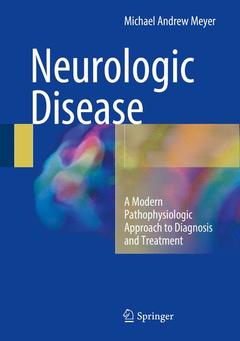Description
Neurologic Disease, Softcover reprint of the original 1st ed. 2016
A Modern Pathophysiologic Approach to Diagnosis and Treatment
Author: Meyer Michael Andrew
Language: English
Subjects for Neurologic Disease:
126.59 €
In Print (Delivery period: 15 days).
Add to cartPublication date: 09-2016
Support: Print on demand
126.59 €
In Print (Delivery period: 15 days).
Add to cartPublication date: 06-2018
Support: Print on demand
Description
/li>Contents
/li>Biography
/li>Comment
/li>
This novel title explores the central and peripheral nervous system in health and disease. By first establishing a fundamental basic science knowledge about the cellular elements of the nervous system, the reader is then presented with clinical cases in a pathophysiologic manner, as exemplified in unifying Guillain Barre and Multiple Sclerosis in one chapter on Demyelinating Disease. The reader is encouraged to adopt a systematic approach of sorting out neurologic problems he or she may face in clinical practice by identifying time and space factors based on the age of a patient. High quality illustrations for each case are included in the book along with novel three-dimensional reconstructions of MR, PET, and CT data whenever possible. Developed largely for medical students as an introduction to the clinical neurosciences, for neurology residents, and for others doing graduate level neuroscience study, Neurology - A Modern, Pathophysiologic Approach to the Diagnosis and Treatment of Neurologic Disease will also be of significant interest to the established neurologist as a comprehensive, up-to-date reference.
First of its kind text using a unique approach to neurological problem solving in a systematic way
Wide range of case examples with extensive illustrations
Comprehensive, emphasizing strong grounding in neuroscience and covering the full range of typical neurological disorders?
Includes supplementary material: sn.pub/extras




